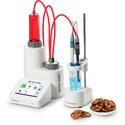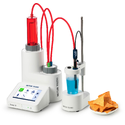Get more detailed insights on how to perform salt, sodium, chloride, and mineral content determinations.
 |
The sodium content determination white paper |
Table salt (sodium chloride, NaCl) is an essential ingredient in processed food and often needs to be determined as accurately as possible as salt not only influences taste, but can also influence one's health. Salt content has certain adverse effects, from high blood pressure to cardiovascular diseases, which are directly linked to a high sodium intake. Individual sodium intake for both adults and children generally exceeds dietary requirements in most countries; therefore, salt content is one of the values that is declared on food labeling. Choosing an accurate sodium content determination method has become important for food and beverage producers.
Various salt testing and sodium determination methods exist, e.g., atomic absorption spectroscopy (AAS), ion chromatography (IC), or inductively coupled plasma mass spectroscopy (ICP-MS). However, in addition to tedious sample preparation and time-consuming system calibration procedures, these techniques require significant capital investment and in-depth user knowledge. The titration-based multiple standard addition (MSA) technique is a powerful analytical technique with many advantages, like making it unnecessary to perform sensor calibration, simple sample preparation and measurement performance, and full automation possibilities.
This white paper describes a comparative study of the multiple standard addition (MSA) method with respect to AAS, IC, and ICP-MS techniques for the content determination of sodium in various food samples.







